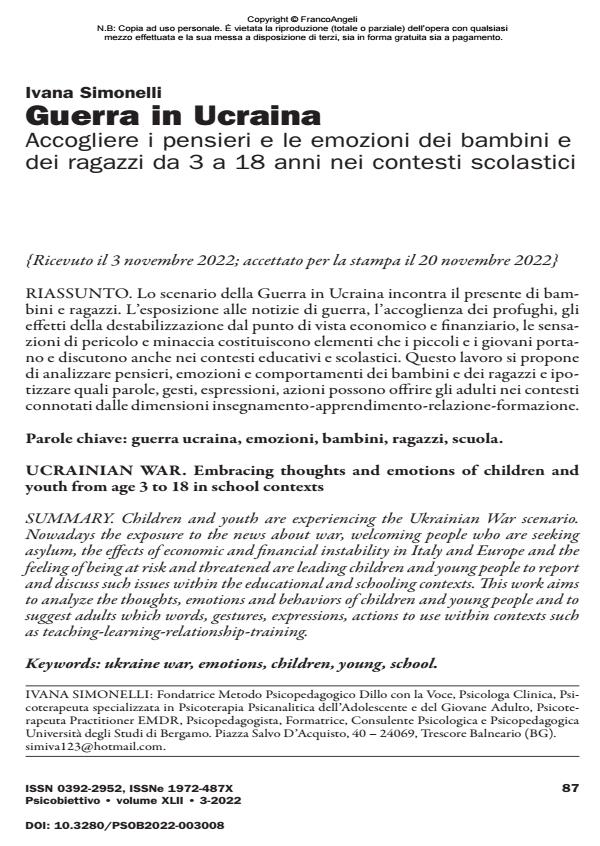UCRAINIAN WAR. Embracing thoughts and emotions of children and youth from age 3 to 18 in school contexts
Journal title PSICOBIETTIVO
Author/s Ivana Simonelli
Publishing Year 2022 Issue 2022/3
Language Italian Pages 13 P. 87-99 File size 664 KB
DOI 10.3280/PSOB2022-003008
DOI is like a bar code for intellectual property: to have more infomation
click here
Below, you can see the article first page
If you want to buy this article in PDF format, you can do it, following the instructions to buy download credits

FrancoAngeli is member of Publishers International Linking Association, Inc (PILA), a not-for-profit association which run the CrossRef service enabling links to and from online scholarly content.
Children and youth are experiencing the Ukrainian War scenario. Nowadays the exposure to the news about war, welcoming people who are seeking asylum, the effects of economic and financial instability in Italy and Europe and the feeling of being at risk and threatened are leading children and young people to report and discuss such issues within the educational and schooling contexts. This work aims to analyze the thoughts, emotions and behaviors of children and young people and to suggest adults which words, gestures, expressions, actions to use within contexts such as teaching-learning-relationship-training.
Keywords: ukraine war, emotions, children, young, school.
- Guerra in Ucraina. Accogliere i pensieri e le emozioni dei bambini e dei ragazzi da 3 a 18 anni nei contesti scolastici Ivana Simonelli, in PSICOBIETTIVO 3/2022 pp.87
DOI: 10.3280/PSOB2022-003008
Ivana Simonelli, Guerra in Ucraina. Accogliere i pensieri e le emozioni dei bambini e dei ragazzi da 3 a 18 anni nei contesti scolastici in "PSICOBIETTIVO" 3/2022, pp 87-99, DOI: 10.3280/PSOB2022-003008